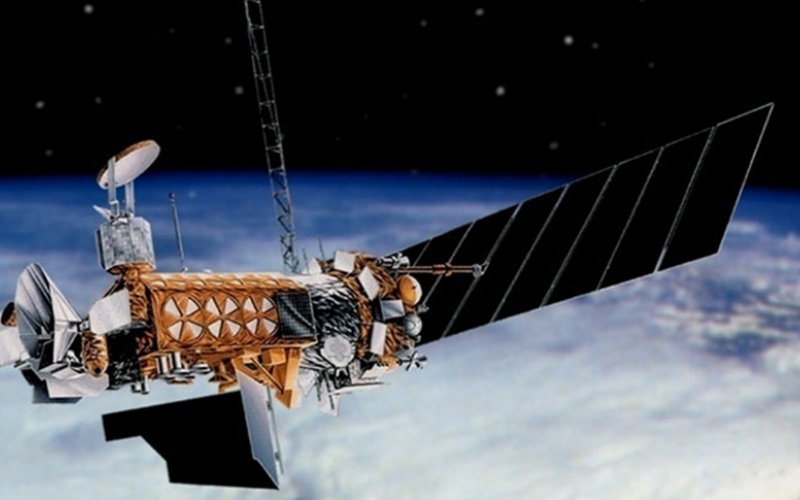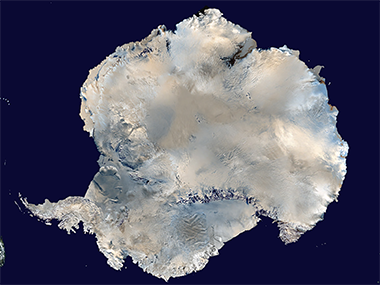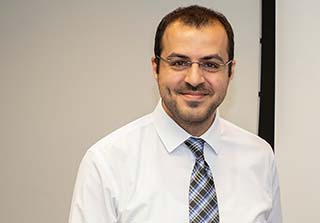Studying Antarctic Snow from Space

UAlbany researcher Mustafa Aksoy intends to use the Global Precipitation Measurement (GPM) satellite constellation as a single multi-frequency microwave radiometer system with 11 frequency channels observing the Antarctic Ice Sheet. (U.S. Air Force/Lockheed Martin artist's concept, used by permission)

ALBANY, N.Y. (Sept. 12, 2019) — Antarctica, the world’s southernmost continent that is nearly twice the size of Australia, is also the driest and coldest place on Earth. And for all the knowledge we have gathered about Antarctica since it was first sighted by explorers in the 19th century, there is still much to learn.
UAlbany researcher Mustafa Aksoy aims to provide a greater level of understanding about Antarctica. An assistant professor in the Department of Electrical and Computer Engineering at the College of Engineering and Applied Sciences, Aksoy’s research interests are in remote geophysical sensing using microwave technologies and electromagnetic theory.
Aksoy was recently awarded $337,000 from the National Science Foundation to study Antarctic firn — partially compacted granular snow in an intermediate stage between snow and glacier ice — using remote sensing from space.
“The project will test the hypothesis that physical and thermal properties of Antarctic firn can be remotely measured from space,” said Aksoy.
Although these properties (such as internal temperature and layer thickness) are highly relevant to studies of Antarctic climate as well as ice-sheet dynamics and mass balance, their measurement relies on sparse on-site surveys under challenging weather conditions.

“Sensors on polar-orbiting satellites can observe the entire Antarctic continent every few days during their years-long lifetime,” Aksoy said. “Consequently, the approaches developed in this study, when coupled with the advancing technologies of small and low-cost CubeSats (a class of research spacecraft called nanosatellites) aim to contribute to Antarctic science and lead to cost-effective, convenient, and accurate long-term analyses of Antarctica while reducing the human footprint on the continent.”
Aksoy’s project will be solely based on publicly available datasets. Therefore, while contributing to interdisciplinary undergraduate and graduate research and education at UAlbany, the project will also encourage engagement of citizen scientists.
“The Antarctic firn holds information critical to assessing and understanding changes in our global climate,” said College of Engineering and Applied Sciences Dean Kim L. Boyer. “Dr. Aksoy’s research promises to unlock that information as never before. We in the College of Engineering and Applied Sciences are justifiably proud of Dr. Aksoy; his work is yet another example of our mission: Science in Service to Society.”
The project aims characterize Antarctic firn layers in terms of their thickness, physical temperature, density and grain size. This is done through multi-frequency microwave radiometer measurements from space.
Electromagnetic penetration depth changes with frequency in ice. This means that firn layer properties can be profiled at different depths using measurements of electromagnetic radiation at various microwave frequencies.
To achieve its objective, the project will utilize the Global Precipitation Measurement (GPM) satellite constellation as a single multi-frequency microwave radiometer system with 11 frequency channels observing the Antarctic Ice Sheet.
Archived on-site measurements of Antarctic firn will be collected and separated into training and test datasets. Microwave emissions simulated using the training data will be compared to GPM constellation measurements to evaluate and improve state-of-the-art forward microwave emission models.
Based on these models, the project will develop numerical retrieval algorithms for the thermal and physical properties of Antarctic firn. Results of retrievals will be validated using the test dataset, and uncertainty and error analyses will be conducted. Finally, changes in the thermal and physical characteristics of Antarctic firn will be examined through long-term retrieval studies exploiting GPM constellation measurements.
Aksoy received his PhD in 2015 from the Ohio State University, where he worked as a graduate research associate at the ElectroScience Laboratory. Prior to joining the University, Aksoy was a post-doctoral research associate at the University of Maryland Baltimore County and NASA Goddard Space Flight Center. He is a member of the Institute of Electrical and Electronics Engineers and the American Geophysical Union.


